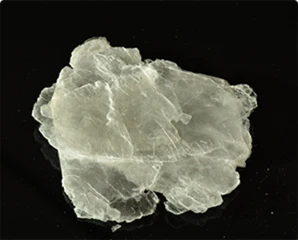Synthetic 120 mesh :large particle size, with pearl shining effect.
In the realm of home decor, epoxy pearl pigments are making waves in flooring, countertops, and wall coatings. Their ability to create stunning visual effects has led to the popularity of epoxy resin art, where artists harness these pigments to create unique, custom pieces. This trend has sparked a rise in DIY projects, with homeowners looking to incorporate personalized designs in their living spaces.
epoxy pearl pigment


The unique properties of flogopita have led to its utilization in a wide range of applications
mica flogopita

Applications of Mica Powder
5. Apply the Paint Once you’re satisfied with the mixture, you can proceed to paint your desired surface. Use a brush, roller, or sprayer, depending on your preference and the area you are covering.
4. Add Mica Powder Gradually sprinkle the mica powder into the mixed epoxy resin. A little goes a long way, so start with a small amount and add more as necessary. Stir well to completely integrate the mica powder into the resin.
Benefits of All-Natural Mica Powder
- Recently published
Natural mica powder and synthetic mica powder also have great differences in electrical insulation, mechanical properties, chemical stability, application range and cost. Natural mica powder has good electrical insulation, but the volume resistivity is lower than that of synthetic mica. Synthetic mica powder has better electrical insulation properties, high volume resistivity and stable dielectric constant, and is suitable for high performance electrical insulation materials. The hardness of natural mica powder is relatively low (2-3), and it has good elasticity and peeling property. The hardness of synthetic mica powder is higher (between 3 and 4), and the tensile strength and compressive strength are better than that of natural mica powder. Natural mica powder is stable in acid-base solution, but it is easy to decompose at high temperature. Synthetic mica powder is stable to acid and base at room temperature, but will be slowly corroded by sulfuric acid above 300℃. Better thermal stability, not easy to release gas. Natural mica powder is widely used in electrical appliances, welding rods, rubber, plastics, paper making, paint and other fields. Synthetic mica powder is mainly used in high-end electrical insulation materials, aviation, aerospace, national defense industry and other high-tech fields. Because synthetic mica powder needs to be produced through complex chemical processes, its production cost is usually higher than that of natural mica powder. Therefore, in the market, the price of synthetic mica powder is often higher than that of natural mica powder. However, with the continuous progress of production technology and the gradual emergence of scale effects, the price of synthetic mica powder is expected to gradually decrease.

Conclusion
In 2022, Lingshou Huajing Mica Co., Ltd. launched cosmetic grade mica powder. The flake structure of mica powder can lock the water on the surface of the skin, forming a protective film to effectively prevent water loss. Its unique gloss and reflection effect add natural and charming luster to the skin, and mica powder also has a certain sunscreen effect. To a certain extent, it can reduce the damage of ultraviolet rays on the skin, protect the skin from the external environment, and prevent sunburn.
The common characteristics of mica group minerals are: layered silicate minerals, monoclinic crystal system, a few trigonal crystal system, the crystals are pseudo-hexagonal columnar, plate and sheet; The aggregate is scaly and foliaceous. It has a set of extremely complete cleavage, along which it is easy to peel into sheets. Therefore, the shape of mica is usually regarded as sheet.
Characteristics of Synthetic Rubber Powder
1. Poudre de Mica en Cosmétique
In short, there are significant differences between natural mica powder and synthetic mica powder in production methods, color and appearance, performance characteristics, application fields, and price and cost. Synthetic mica powder is superior to natural mica powder in terms of high temperature resistance, transparency, electrical insulation, stability and mechanical properties, while natural mica powder has more advantages in resource acquisition, cost and color. When choosing which type of mica powder to use, you can consider the high temperature resistance of the required material, electrical insulation performance, transparency and color requirements, evaluate the mechanical strength and hardness of the required material, consider chemical stability and other different application scenarios and technical requirements to make a reasonable choice.
- Insulating Paint for Interior Walls_ The Ultimate Solution for Energy Efficiency
Synthetic 120 mesh :large particle size, with pearl shining effect.
- Random reading
Natural high quality Muscovite:feel fine, soft lubrication.
Mica is a very common rock-forming mineral, widely distributed in crystalline rocks. Its general chemical formula can be expressed as:
Mica powder is derived from natural minerals found within the earth’s crust. Mica itself is a group of silicate minerals characterized by their ability to form thin sheets. When processed, these sheets are ground into a fine powder, yielding a product that sparkles in the light. The natural reflectivity and translucence of mica powder make it an ideal additive for car paints, enabling a range of vibrant colors and finishes.
While mica processing plants play a significant role in industrial production, it is essential to address the environmental and ethical concerns associated with mica mining. Many mica deposits are located in developing countries, where mining can lead to detrimental environmental impacts and social issues, including child labor. Therefore, initiatives to promote sustainable practices and ethical sourcing within the mica supply chain are crucial.
The common characteristics of mica group minerals are: layered silicate minerals, monoclinic crystal system, a few trigonal crystal system, the crystals are pseudo-hexagonal columnar, plate and sheet; The aggregate is scaly and foliaceous. It has a set of extremely complete cleavage, along which it is easy to peel into sheets. Therefore, the shape of mica is usually regarded as sheet.
Shimmer mica powder is also a favorite among artists, particularly those who focus on painting and mixed media. It can be mixed with acrylic paints or used as a powdered pigment in various mediums, enriching the artwork with its iridescent qualities. The added dimension and reflective properties can make even the simplest creations pop, captivating viewers and enhancing the overall aesthetic experience.
In the automotive industry, the quest for high-performance materials is never-ending. Among these, automotive mica powder has emerged as a crucial component due to its unique properties. Mica, a naturally occurring silicate mineral, has been utilized for centuries across various applications, but its role in automotive manufacturing is becoming increasingly significant. This article explores the benefits, applications, and future of automotive mica powder in the automotive sector.
Mica is a very common rock-forming mineral, widely distributed in crystalline rocks. Its general chemical formula can be expressed as:
3. Soap Making Mica powder is a favorite among soap makers, as it allows for vibrant colors and eye-catching designs. When added to melt-and-pour soap bases or cold process soaps, it provides an appealing finish that elevates the aesthetic quality of the product.
In the ever-evolving world of beauty and skincare, the pursuit of products that not only enhance our appearance but also transcend traditional beauty norms is at the forefront. One such remarkable ingredient that has captured the hearts of beauty enthusiasts is gold mica powder. With its captivating shimmer and luxurious appeal, gold mica powder has found its place in various cosmetic formulations and applications, offering a wealth of benefits for the skin.
Sustainability in Sourcing: Ethical Practices for Mica Powder
The mica variety that does not contain iron is colorless in flakes, and the higher the iron content, the darker the color, and the more polychromatic and absorbable it is. According to the different chemical composition and optical characteristics, mica group minerals can be divided into Muscovite subgroup, biotite-phlogopite subgroup and lemica subgroup. The common mica are biotite, phlogopite, Muscovite and so on.
When sourcing mica flakes, quality should be a primary concern. High-quality mica flakes ensure better performance in applications, leading to enhanced final products. In cosmetics, impurities or lower-quality flakes can cause skin irritations or decrease the aesthetic appeal of makeup products. In the paint industry, superior mica contributes to better adhesion, improved UV resistance, and an attractive finish. Therefore, working with a reputable mica flakes supplier who guarantees consistent quality is essential for businesses aiming for success in their respective markets.
Later, with the development of science and technology, people gradually realized that mica minerals have high insulation, high temperature resistance, strong acid and alkali resistance, and mica also began to enter building materials, fire, plastics, paper, rubber, pearlite pigments and other industries. These are mainly Muscovite and phlogopite.
- Discover the Allure of Synthetic Mica
The Allure and Functionality of Matte Mica Powder in Cosmetics
Featured products:
1. Preparation Make sure to work in a well-ventilated area and put on gloves and safety goggles. Epoxy resin can release fumes and may irritate the skin.
- Search
- Links
- mica is what type of rock
- mica chips for concrete
- mica common uses
- mica powder epoxy resin
- mica pearlescent pigments
- natural mica based pearl industrial pigments
- adding mica to candles
- mica processing plant
- whats mica powder
- is mica based pearlescent pigment safe to eat
- insulating paint interior walls
- mica in eyeshadow safe
- heat reflective paint for interior walls
- ground mica powder
- mica bulk
- adding mica powder to paint
- mica powder foundation
- mica for lip gloss
- insulating paint for interior walls
- ways to use mica powder
- is mica powder safe for eyes
- flake of mica
- what is in mica powder
- mica powder what is it
- mica china
- pearlescent mica powder
- calcined mica uses
- can i use mica powder in soap
- calcined mica
- interior thermal insulation paint
- can i use mica powder to tie dye
- interior paint top coat
- lip safe mica pigments
- can i use mica powder in candles
- wholesale mica powder for cosmetics
- what is mica powder used for in makeup
- mica flakes
- interior wall coating
- is mica safe for lips
- types of mica
- mica pigments wholesale
- what is mica powder for
- fluorphlogopite
- pearl pigment powder
- what do you use mica powder for
- clear muscovite
- mica use
- mica operation
- organic mica powder for cosmetics
- synthetic fluorphlogopite
- mica in cosmetic products
- mica powder paint
- pearl powder for paint
- what to use mica powder for
- cosmetic pigment suppliers
- rose gold mica powder
- organic mica powder for skin
- golden colour mica
- external wall insulation paint
- firedots mica powder
- whats mica powder used for
- gold mica powder for cosmetics
- all natural mica powder
- synthetic mica glitter
- mica powder how to use
- mica process
- mica varieties
- muscovite powder
- what is mica powder made out of
- skin safe mica
- mica beauty cosmetics shimmer powder
- synthetic fluorphlogopite vs mica
- types of mica powder
- epoxy with mica powder
- mica glitter for lip gloss
- mica pigments
- pearl white pigment
- calcined mica for electrical insulators
- what can you do with mica powder